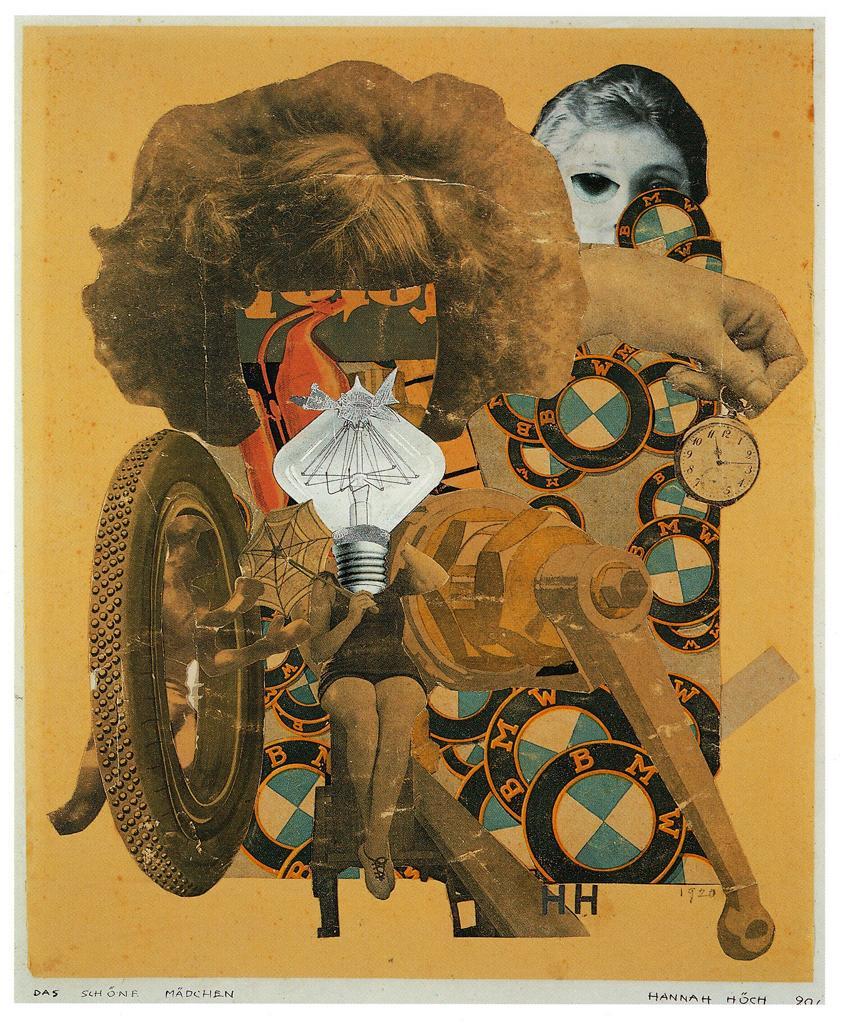
Hannah Höch, The Beautiful Girl, 1919-20. Collage. Dada
This is a photomontage, a distinctive art form developed by the Berlin Dadaist.The title hints at the conventional picture of a beautiful woman, but the image contradicts it.
The head is at the upper left, the face is replaced by a piece of magazine advertisement, leaving just the hair. Her face appears at the top right with the lower portion hidden by hand holding pocket watch. The central figure’s head is replaced by the light bulb and she is sitting on an industrial bench, beside a tire and a machine handle, which are references to modern industry. While the repetition of BMW logos hints at the commodity culture and mass production that dominated the German society.
Quote from the artist,
“the glorification of the modern woman was never something I look for in my work. I have, in contrast, more often be motivated by woman’s sufferings.” (hemus 107)
This could be one of the cases; the woman’s face is separated from the body by the elements and appears at the back. Hoch brings to mind the German Mass media’s depiction of stereotyped woman being mindless consumers of the commodity culture.
Hemus, Ruth. Dada’s Women. New Haven & London: Yale University Press, 2009. Print.
Biro, Matthew. The Dada Cyborg: Vision of the New Human in Weimar Berlin. University of Minnesota Press, 2009. Print
 magnificentgooppaperthing liked this
magnificentgooppaperthing liked this  stsuen reblogged this from arth207-spring
stsuen reblogged this from arth207-spring arth207-spring posted this